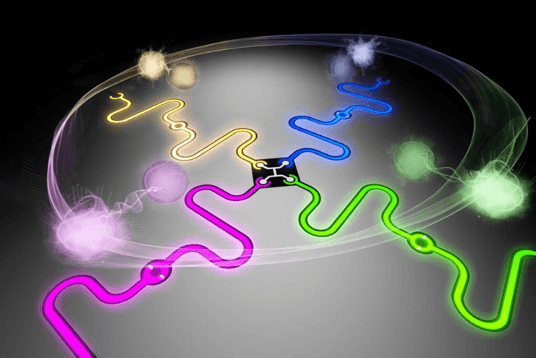A new kind of quantum processor based on superconducting circuits
From prof. Blais group, two articles this year from postdoc Shruti Puri and collaborators made quite an impact in the field of circuit QED:
The first article shows how to create quantum states of light known as “Schrödinger’s cat” states. In addition to being interesting from a fundamental point of view, these states are useful for a simplified form of quantum error correction. In particular, the Yale group and their theoretical collaborators have been working on the generation and use of these states in superconducting circuits for some years now. Postdoc Shruti Puri et al. has succeeded in showing that there is a much simpler and more effective way of preparing these states. Seeing the results, the Yale group and collaborators has decided that they will put aside their current approach to focus on Dr Puri’s proposal.
Dr Puri and collaborators raised the bar even higher by showing in the second article how to use these same ideas to realize a more ‘quantum’ version of the D-Wave Systems computer. In this work, they have introduced a new kind of quantum processor which can imitate a complex network of magnetic spins and solve hard combinatorial optimization problems. It is shown that the nature of quantum fluctuations makes this cavity-based processor robust to noise and conceivably, it could also provide the elusive quantum speedup. “The simple blueprint of the processor shows that it can be easily implemented with the existing toolkit of superconducting circuits and will motivate experiments. Hopefully, in a few years we will see realizations of this architecture and really start benchmarking it against other classical or quantum machines.” said Dr Puri. A patent application has been filed on such a breakthrough.
“The simple blueprint of the processor shows that it can be easily implemented with the existing toolkit of superconducting circuits and will motivate experiments. Hopefully, in a few years we will see realizations of this architecture and really start benchmarking it against other classical or quantum machines.” said Dr Puri. A patent application has been filed on such a breakthrough.
- Dre Puri
What kind of problems such a quantum processor/computer could solve?
Many hard, but important optimization problems can be mapped onto finding the lowest energy state of interacting magnetic spins or dipoles. The most famous example of such a problem is the travelling salesman problem, which involves finding the shortest route between different cities. Similar problems also appear, for example, in machine learning algorithms, protein folding, etc. Therefore, finding ways to efficiently solve these would be extremely valuable for a wide range of applications.
These problems become exponentially challenging with the size, for example, in the travelling salesman problem with 30 cities, the number possible routes are of the order of 1030 and that with 100 cities is 1055! Solving such problems become impractical even on the largest supercomputer. Scientists have come up with other alternatives, a popular one being a technique called quantum annealing, which exploits the effect of quantum tunnelling to find the solution to the optimization problem.

